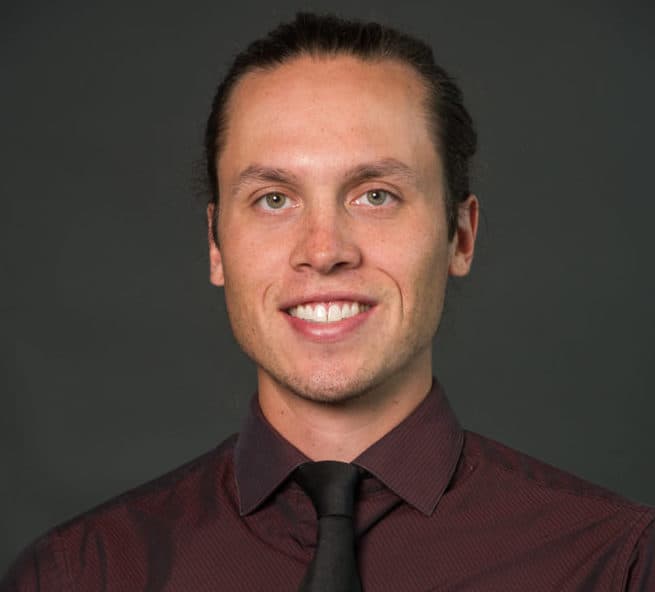When medical student Thomsen DSA����Ӱ�Ӵ�ý�Hont started his research in 2017 there was one Indigenous doctor working in the Northwest Territories.��SA����Ӱ�Ӵ�ý�H�DzԳ�'�� as a Jane Glassco Fellow recommends ways the territory can recruit and train Indigenous doctors from the North, improving outcomes for continuity of care, patient-doctor rapport and retention.

Medical student and Jane Glassco Fellow Thomsen DSA����Ӱ�Ӵ�ý�Hont research lights a pathway for supporting Indigenous Northerners to pursue careers in medicine.
Improving representation will take concerted early recruitment, medical school application workshops, partnerships and expanded financial assistance for burdensome admission costs and tuition, he said.
While working for the Institute for Circumpolar Health Research, DSA����Ӱ�Ӵ�ý�Hont was applying to medical school himself. The barriers were apparent: expensive trips to be interviewed for medical school and no in-territory testing options for the Medical College Admission Test (MCAT).
(It takes students three years, on average, to get into a Canadian medical school.)
For students travelling from communities, those costs are prohibitive. DSA����Ӱ�Ӵ�ý�Hont recommends funding between $500 to $10,000 per student per year to cover application, MCAT and interview travel cost reimbursement.
Until 2006, Aurora College invigilated the exam. Today, the nearest testing centre is in Edmonton, adding travel and lodging costs for candidates.
The Royal Commission on Aboriginal Peoples report of 1996 and the Truth and Reconciliation CommissionSA����Ӱ�Ӵ�ý�s (TRC) Calls to Action of 2015 both recommend the training and hiring of more Indigenous healthcare workers in Canada.
Now in his third year of medical school, DSA����Ӱ�Ӵ�ý�Hont intends to return to Yellowknife to practice medicine.
DSA����Ӱ�Ӵ�ý�Hont recommends the territory target future physicians at a young age, with the goal of having students return to practice in-territory.
Such a program would see students preferentially admitted to medical school, because they are more likely to return to practise in a remote setting due to family ties or cultural background.
Although creating a fully-fledged medical school in the NWT is SA����Ӱ�Ӵ�ý�unrealisticSA����Ӱ�Ӵ�ý� the territory should seek out partnerships with governments and individual medical schools in the south, he said.
Previously, the GNWT reserved seats at $75,000 per year between 2006 and 2011 in medical programs at the University of Calgary and University of Alberta. It discontinued the seat-purchase program as students started to be admitted on merit alone. However, medical school admission is becoming increasingly competitive SA����Ӱ�Ӵ�ý�to the point where some qualified Indigenous applicants from the territory have been unable to get in,SA����Ӱ�Ӵ�ý� said DSA����Ӱ�Ӵ�ý�Hont.
"I found out there have been few before me who are Indigenous and from the territory, who have gone away to medical school and come back,SA����Ӱ�Ӵ�ý� he said.
Opportunities for job shadowing Northern physicians are scarce, but the GNWTSA����Ӱ�Ӵ�ý�s health department is working to improve the process to apply for clinical opportunities, he said.
Currently, medical students in the NWT are only permitted to shadow physicians through electives in their senior years of medical school. Nunavut and Yukon allow shadowing outside of official clinical electives for credit. In southern provinces, students have opportunities to shadow physicians any time after starting medical school.
Funding from student financial assistance through grants and bursaries is also not enough to cover both undergrad and medical school, forcing students to take on heavy loans and lines of credit, he said.
The GNWT offers student financial assistance for undergraduate degrees, but the largest financial burden comes with medical school, which can set a student back at least $18,000 per year before living costs.
Return-for-service (RFS) agreements not only alleviate cost burdens, but can be an incentive to pursue medicine in the first place, according to Indigenous medical students interviewed by DSA����Ӱ�Ӵ�ý�Hont.
Locum hiring results in poor continuity of care for patients due to high physician turnover, he said.
As a result, patients are reluctant to build rapport with a provider if they anticipate poor continuity of care.
SA����Ӱ�Ӵ�ý�The whole system of high turnover perpetuates that and people arenSA����Ӱ�Ӵ�ý�t willing to engage within the health system,SA����Ӱ�Ӵ�ý� said DSA����Ӱ�Ӵ�ý�Hont. SA����Ӱ�Ӵ�ý�They are less willing to invest time in the longer term health care provider and patient relationship.SA����Ӱ�Ӵ�ý�
Long-term retention is SA����Ӱ�Ӵ�ý�not impossible with people that arenSA����Ӱ�Ӵ�ý�t from here, but it's more difficult to achieve,SA����Ӱ�Ӵ�ý� he said.
SA����Ӱ�Ӵ�ý�There are a lot of great physicians that have come North that are doing great things and they develop relationships with communities. Even in a best case scenario, if a lot of Indigenous doctors are trained and recruited, there is still going to be a need to bring people up from elsewhere,SA����Ӱ�Ӵ�ý� he said.
Training people from the territories should remain a long-term goal, said DSA����Ӱ�Ӵ�ý�Hont.
The number of Indigenous students graduating from medicine across Canada is on the upswing and the territorial government has previously voiced its commitment to the TRC calls to action, he said.
SA����Ӱ�Ӵ�ý�ThereSA����Ӱ�Ӵ�ý�s some will to work toward that. ISA����Ӱ�Ӵ�ý�ve had a lot of good discussions with people who are open to these ideas within the territorial government and thereSA����Ӱ�Ӵ�ý�s a lot of interest,SA����Ӱ�Ӵ�ý� he said.


